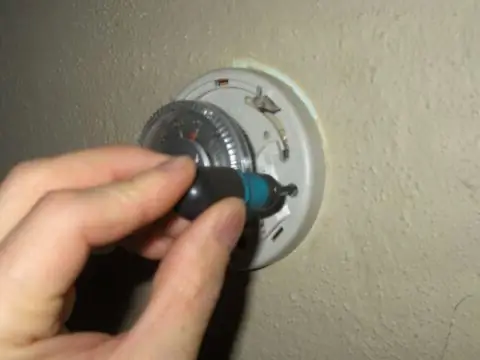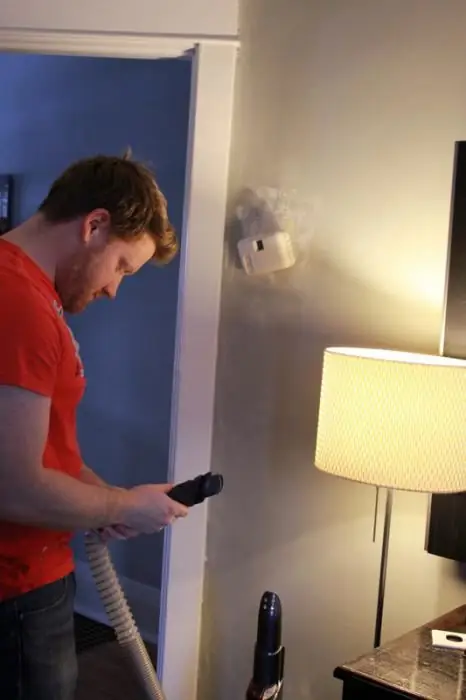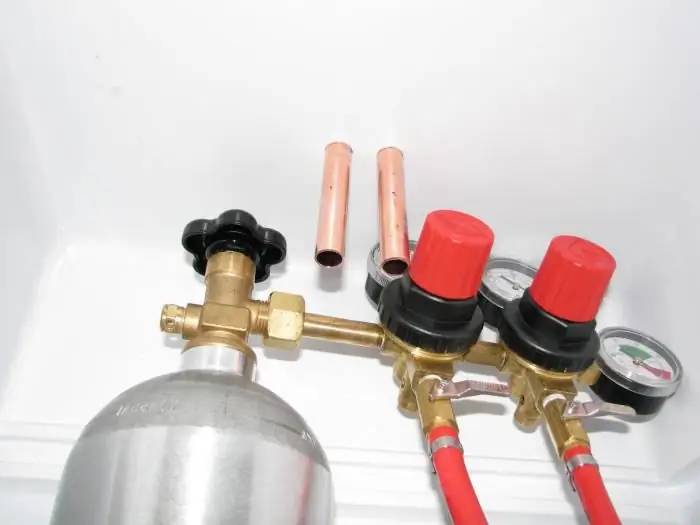Russian winter is distinguished by its severity and severe cold, which is known to all. Therefore, the premises in which people are located must be heated. Central heating is the most common option, and if this is not available, you can use an individual gas boiler. However, it often happens that neither one nor the other is available, for example, in an open field there is a small room of a water pumping station, in which machinists are on duty around the clock. It could be a room in some large uninhabited building or a guard tower. There are plenty of examples.

Out of the situation
All these cases force the installation of electric heating. With a small room size, it is quite possible to doa conventional electric oil radiator, and in large rooms most often they arrange water heating using a radiator. If you do not monitor the temperature of the water, then sooner or later it may boil, which will cause the entire boiler to fail. To protect against such cases, thermostats are used.

Device Features
Functionally, the device can be divided into several separate units: a temperature sensor, a comparator, and load control devices. All of these parts will be described next. This information is necessary in order to make a thermostat with your own hands. In this case, a design is proposed in which a conventional bipolar transistor serves as a temperature sensor, due to which it is possible to abandon the use of thermistors. This sensor works on the basis that the parameters of the transistors of all semiconductor devices are more dependent on the temperature of the environment.

Important nuances
The creation of a thermostat with your own hands must be carried out with the obligatory consideration of two points. First, we are talking about the tendency of automatic devices to auto-generate. In the event that too strong a connection is established between the actuator and the thermal relay sensor, after the relay is triggered, it immediately turns off and then turns on again. This will happen when the sensor is in close proximity to a cooler or heater. Secondly, everyonesensors and electronic devices have a certain accuracy. For example, you can track a temperature of 1 degree, but it is much more difficult to track smaller values. In this case, simple electronics often start to make mistakes and make mutually exclusive decisions, especially when the temperature is almost equal to that set for operation.

Creation process
If we talk about how to make a thermostat with your own hands, then it’s worth saying that the sensor here is a thermistor that reduces its resistance during the heating process. It is connected to a voltage divider circuit. The circuit also includes a variable resistor R2, through which the response temperature is set. From the divider, the voltage is supplied to the 2I-NOT element, which is switched on in the inverter mode, and then to the base of the transistor, which serves as a spark gap for the capacitor C1. It, in turn, is connected to the input (S) of the RS flip-flop, which is assembled on a pair of elements, as well as to the input of another 2I-NOT. From the divider, the voltage goes to the input 2I-NOT, which controls the second input (R) of the RS flip-flop.

How it works
So, we are looking at how to create a simple thermostat with your own hands, so it is important to understand how it works in different situations. At high temperatures, thermistors are characterized by low voltage, so there is a voltage on the divider that is perceived by the logic circuits as zero. The transistor is openthe input of the S-flip-flop is perceived as a logical zero, and the capacitor C1 is discharged. The output of the trigger is set to a logical unit. The relay is in the on mode, and the transistor VT2 is open. To understand exactly how to make a thermostat, it is worth noting that this particular implementation of the relay is focused on cooling the object, that is, it turns on the fan when the temperature is high.
Lower temperature
When the temperature drops, the resistance of the thermistor increases, which leads to an increase in the voltage across the divider. At a certain moment, the transistor VT1 closes, after which the charging of the capacitor C1 through R5 begins. In the end, there comes a moment of reaching the level of a logical unit. It is she who enters one of the inputs of D4, and the voltage from the divider is supplied to the second input of this element. When logical ones are set at both inputs, and zero appears at the output of the element, the trigger will switch to the opposite state. In this case, the relay will be turned off, which will allow you to turn off the fan, if necessary, or turn on the heating. So you can make a thermostat for the cellar with your own hands, so that it turns on and off the fan if necessary.
Rise in temperature
So, the temperature started to increase again. Zero on the divider will first appear at one of the inputs of D4, and it will remove zero at the input of the trigger, changing it to one. Further, as the temperature increases, zero will appear on the inverter. After changing it to one, the transistor will be opened, whichwill lead to the discharge of the element C1 and the setting of zero at the input of the trigger, which turns off the heating of the coolant in the water heating system or turns on the fan. Such do-it-yourself thermostats for heating work quite efficiently.
Blocks C1, R5 and VT1 are designed to eliminate auto-generation, due to the fact that they have a turn-off delay time. It can range from a few seconds to several minutes. We are considering a fairly simple thermostat, created with our own hands, so the above assembly also eliminates the bounce of the temperature sensor. Even with a very small very first pulse, the transistor opens and the capacitor is instantly discharged. Further chatter will be ignored. When the transistor closes, the situation repeats. Capacitor charging starts only after the end of the last bounce pulse. Thanks to the introduction of a trigger into the circuit, it is possible to ensure the maximum clarity of the relay operation. As you know, a trigger can have only two positions.

Assembly
To make a thermostat with your own hands, you can use a special circuit board, on which the entire circuit will be assembled in a hinged way. You can also use a printed circuit board. Power can be used any within 3-15 volts. The relay should be selected accordingly.
In a similar way, you can make a thermostat for an aquarium with your own hands, however, it should be noted that it must be attached to the outside of the glass, thenthere will be no problems using it.
The relay described above has demonstrated a very high reliability during operation. The temperature is maintained to the nearest fraction of a degree. However, it is directly dependent on the time delay determined by the R5C1 circuit, as well as the response to operation, that is, the power of the cooler or heater. The temperature range and the accuracy of its setting is determined by the selection of the divider resistors. If you made such a thermostat with your own hands, then it does not need to be configured, but starts working immediately.






